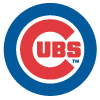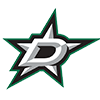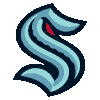Fantasy Baseball Writing 101: Everyone loves lists. When searching for a topic, think of some players you want to write about, then concoct a theme common to all the players and voila, you have a piece.
Fortunately, I don't need to stretch to come up with topics. I've been asked for my position rankings. Ask and you shall receive. Beginning with starting pitching, I'll share my top 20 at each position with commentary. I'll probably go top 60 with starting pitching and outfield, once some free agents sign and the rankings settle.
Today we start with starting pitching. The list is subject to change since it's likely I'm missing something. There's so much information out there and not enough time to digest it, at least not by the end of October. However, with the National Fantasy Baseball Championship and Fantrax running pay drafts in November (Fantrax has already started), there's a thirst for information, as evidenced by several of my brethren already posting their rankings. I don't want to speak for them, but I'm willing to bet mine are the only rankings driven by projections, converted to expected earnings.
1. Jacob deGrom, New York Mets
This may be a surprise, but with Gerrit Cole's 2020 destination unknown, deGrom leads the pack. The key is assuming he finally logs wins commensurate with his run prevention, entailing a total in the upper teens. Wins aren't the crapshoot everyone narrates. Sure, there's more variance, but a sage expectation considers the expected
Fantasy Baseball Writing 101: Everyone loves lists. When searching for a topic, think of some players you want to write about, then concoct a theme common to all the players and voila, you have a piece.
Fortunately, I don't need to stretch to come up with topics. I've been asked for my position rankings. Ask and you shall receive. Beginning with starting pitching, I'll share my top 20 at each position with commentary. I'll probably go top 60 with starting pitching and outfield, once some free agents sign and the rankings settle.
Today we start with starting pitching. The list is subject to change since it's likely I'm missing something. There's so much information out there and not enough time to digest it, at least not by the end of October. However, with the National Fantasy Baseball Championship and Fantrax running pay drafts in November (Fantrax has already started), there's a thirst for information, as evidenced by several of my brethren already posting their rankings. I don't want to speak for them, but I'm willing to bet mine are the only rankings driven by projections, converted to expected earnings.
1. Jacob deGrom, New York Mets
This may be a surprise, but with Gerrit Cole's 2020 destination unknown, deGrom leads the pack. The key is assuming he finally logs wins commensurate with his run prevention, entailing a total in the upper teens. Wins aren't the crapshoot everyone narrates. Sure, there's more variance, but a sage expectation considers the expected runs allowed and run support tempered by the innings pitched. Suffice it to say even with the Mets middling offense and erratic bullpen, deGrom has been victimized incessantly the last couple of seasons.
2. Justin Verlander, Houston Astros
I know Verlander fanned 300 and is stingy with free passes, but even the greatest can also be lucky. If Verlander's skills repeat, chances are his ERA will be higher. Even in today's climate, 36 homers are excessive. Yeah, they were mostly solo shots, blah blah blah, woof woof woof. He was lucky. That said, rankings are a guide. Strategically, locking down more whiffs and hoping the ERA regression isn't too steep could be more prudent than hoping deGrom flips the script on wins.
3. Gerrit Cole, Free Agent
Free agent projections assume a neutral venue with league average run support. If Cole joins a contender (likely), he'll move up at least one spot, provided the venue isn't too hitter friendly. Let's see where he lands in a few of the plausible venues, along with some for fun.
- Astros: 1
- Giants: 1
- Mets: 1
- Dodgers: 1
- Angels: 2 (by $.04)
- Yankees: 2
- Cubs: 3
- Red Sox: 3
- Rockies: 4
The team for which Cole would be projected to earn the most is… the Mets!
4. Max Scherzer, Washington Nationals
Last week, the effect of adding or taking away a few plate appearances for elite was discussed. The same notion holds true for pitchers. The top three arms are all projected for about 205 frames. Meanwhile, Mad Max (Ed note: after Game 7's gutsy performance, maybe we should start calling him Miracle Max) is at 195. It's more than the Game 5 scratch, Scherzer is getting up there in years and mileage and incurred a couple of injuries this season, not to mention he was working with a broken finger for much of the year.
5. Walker Buehler, Los Angeles Dodgers
Buehler benefits from a great park and solid run support, but he's also a horse, on the cusp being a 200-inning workhorse in an era not many eclipse that level. He can even give back a little of his strikeout and control gains and still finish top five.
6. Jack Flaherty, St. Louis Cardinals
At first blush, this one surprised me. Obviously, Flaherty is good – but kicking off the back end of the top 10? You betcha. Flaherty has an even better chance to crack the 200-inning plateau, falling just 3.2 innings short. While I understand first and second-half splits aren't always predictive, Flaherty's post-break surge convinced me not to mess with the projection and trust it. For what it's worth, the 23-year-old righty recorded an 18.5 percent K%-BB% before the break, upping it to a dominant 27.6 percent afterwards.
7. Mike Clevinger, Cleveland Indians
I had the pleasure of watching every Clevinger start since he anchored my TGFBI squad. I grabbed him in the fourth round, whereas he's ticketed for the second this season. Other than a couple of excusable hiccups just after he returned from injury, he was dominant. There was nothing fluky and like Buehler, he doesn't have to match 2019 to be worth this spot. Clevinger can give back some of his gains and still be top 10. Admittedly, I could be aggressive with innings, but he appears healthy and should warrant a full workload.
8. Chris Sale, Boston Red Sox
Sorry, I'm not fielding questions. Jokes aside, who knows? I'm generally more optimistic than is good for me, but the thinking is if Sale throws at least 150 innings, he's healthy and performing at a high level. Keep in mind, when healthy, the southpaw is the most skilled hurler in the game when numbers are neutralized for venue. I'm not saying he'll maintain that level, but the starting point is as good as it gets.
Take this for what it's worth (basically, nothing) but here's the results of a tweet I posted:
Chris Sale - innings pitched in 2020, what say you?
— Todd Zola (@ToddZola) October 29, 2019
While there's rightfully a cautious group, most expect Sale to land in the 150-inning range. Again, I could be wrong, but if Sale is pitching that much, they'll be high-quality frames. That said, he could easily get the Chris Archer treatment, albeit for completely different reasons. It's one thing for me to rank Sale here. It's quite another to pull the trigger when I'm on the clock. For the record, it would depend on the league format and point in the draft, since I'm still in the camp it's not obligatory to force pitching to win.
9. Clayton Kershaw, Los Angeles Dodgers
Full disclosure: I may end up moving Kershaw down a few notches. It's not health concerns, as that's already factored in. It's more about the homers. Like Verlander, Kershaw's ERA didn't reflect the increased number of long balls he surrendered. I'm not sure I regressed his 2020 ERA enough. Even so, he's firmly in the top 12 at worst, as Kershaw's skills bounced back and while they're not vintage, they're still exceptional. With 178.1 stanzas last season, following campaigns of 161.1 and 175, something in the 175 IP range seems plausible.
10. Stephen Strasburg, Washington Nationals
Perhaps Strasburg's Game 6 heroics boost him up by "feel" drafters, we'll see. I'm also assuming he doesn't opt out of his seven-year, $175 million contract, but after Tuesday night, maybe he will. That said, Nationals Park is a latent hitting venue, so a new home park could help his numbers, at least on paper.
Strasburg's skills have never been in question. It's all about health. Perhaps projecting 186 stanzas is too big a leap of faith, but he did toss 209 in 2019 and 175.1 in 2017. The caveat is Strasburg amassed fewer than 150 innings in his other seasons since 2014.
11. Zack Greinke, Houston Astros
I tried, I really did, but I couldn't find a tangible reason to push Greinke any lower. He incurred the standard aging penalty as well as an innings reduction to 196 after averaging over 206 for the previous three seasons. Something to keep in mind is in recent years, Minute Maid Park had played as an extreme pitching venue before this season, when it tilted to batters. Using a three-year average index, the park still benefits pitching. Park factors can fluctuate, but there's a chance the increase in runs index is tied to the juiced ball, as a greatest percentage of runs tallied via the homer were registered in 2019 than at any other time in history. Since Minute Maid Park is homer-friendly, the run factor could piggyback more than other places. On the other hand, one of Greinke's strengths is keeping the ball in the yard. If you're a believer, chances are you won't have to pull the trigger this early.
12. Charlie Morton, Tampa Bay Rays
For the past couple of seasons, Morton has outpitched his peripherals. so expecting an ERA correction was prudent. However, he fought off the regression monster by ratcheting up his skills. In fact, in a couple of ways, Morton was unlucky this summer. There's risk involved here since most give back something when they make the kinds of gains enjoyed by Morton. Plus, he's on the wrong side of 35, so typical aging is also a concern. Finally, he's a bit like Noah Syndergaard, firing 194.1 innings after averaging 156.2 frames from 2017-2018. Hmm, I better stop now before I lower him.
13. Shane Bieber, Cleveland Indians
Hearken back a couple of years. If asked which two Indians pitchers would be top-15 material, most would have responded Corey Kluber and Carlos Carrasco with a smattering of Trevor Bauer support. Fast forward, and we're looking at Clevinger and Bieber. In fact, many will rank/draft Bieber ahead of Clevinger. For me, it's Clevinger's velocity versus Bieber's uncanny ability to induce weak contact. While I'm not saying that's not a skill, the jury is still out how repeatable it is, rendering Bieber the greater risk. That said, Bieber's K% and especially BB% are elite, so even if the hit rate rises, he's still a fantasy ace.
14. Aaron Nola, Philadelphia Phillies
This time last season, Nola inhabited the top 10. For the middle portion of the season, Nola was that guy. However, a subpar opening to the campaign in tandem with a shaky finish introduces some concern. Nola did firm up workhorse status, tying five others for most starts in the league with 34. His control wasn't as sharp as expected, coming off a 2018 campaign where he improved his walk rate. Chances are, the 26-year-old righty isn't as good as he was perceived to be two seasons ago, but not as sketchy as he looked at times last year. If he's penalized at all by the market, Nola could be a prime target for those hoping to delay taking their first starter.
15. Chris Paddack, San Diego Padres
Some old school fantasy players will question this ranking for someone with just 140.2 MLB innings under their belt – and that's fair. I'd like to point out we also have some video game-like numbers from Paddack as he progressed through the Padres system, but I get the perspective. In his favor is he earned every bit of his rookie success. According to Statcast, his expected metrics (average, slugging, wOBA) were in sync with his actual numbers, illustrating he wasn't lucky. As with Bieber, it remains to be seen if Paddack can maintain this level of weak contact. I regressed his BABIP off the .237 he posted, the question is if .262 is adequate or if I should ding it even more. Regardless, Paddack with likely remain a top-20 starter, buoyed by the removal of the kid gloves, allowing the youngster to surpass a 95-pitch limit.
16. Lucas Giolito, Chicago White Sox
Get ready, the theme of the offseason will be identifying the next Giolito. The problem is there was no indication he'd make the quantum leap seen this season. He was literally the worst qualified starter in 2018. The ONLY point in his favor was prospect pedigree, but that wasn't anywhere close to enough to take a flyer. The next Giolito won't be identified in the offseason but rather in early April, as risk-takers look for someone whose changes end up being real and sustainable. Specifically, Giolito reworked his delivery, shortening his arm action while adjusting his arsenal. The difference in velocity and spin rate was significant and, as we learned, actionable. The caveat is players often fail to maintain gains made from changes one year to the next, at least in full. This optimistic ranking suggests I'm expecting Giolito to sustain the improvements.
17. Mike Soroka, Atlanta Braves
Soroka could be a prime example of why rankings are a guide, not the be-all, end-all draft list. The narrative will be draft Soroka despite a paucity of punchouts to set a foundation for ratios, then supplement strikeouts later with guys that fan a ton of batters but are ratio risks. On paper, it's perfectly viable. The problem is the low strikeouts render Soroka's ratios more volatile, so if he runs into some batted ball misfortune, the base could have cracks. Even if you somehow can promise Soroka's ratios are stellar, it still may be better to skip down for someone more dominant, as there's no guarantee the strikeout arms will be there at your subsequent picks, without reaching.
18. Patrick Corbin, Washington Nationals
Some free agent signings indeed work out, at least so far. In a nutshell, the lefty did exactly as he was supposed to do, and there's no reason he can't do it again.
19. Luis Castillo, Cincinnati Reds
If asked who outside of my top 15 is most likely to end up top 10, I'd answer Castillo. That said, there's a little too much home run risk to project him in that range, especially since Castillo doesn't possess stellar control. Working in Great American Ball Park doesn't help matters, though everything else Castillo does combats the long ball. His average exit velocity and launch angle allowed are not conducive to hitters leaving the yard. I need to get a better read on the market, but my early inkling is if there's any reticence, I'd love to invest and hope for improved control or luck on fly balls, limiting homers.
20. Blake Snell, Tampa Bay Rays
With Snell, it's mostly about durability with a little bit of spotty control mixed in. It's mostly a matter of innings, though. Perhaps it's unfair as the 26-year-old tossed 180.2 frames in 2018 and a combined 173.1 in 2017 between Triple-A and the majors, making 31 starts both campaigns. Snell managed just 107 this past season, missing time after having arthroscopic surgery on his elbow. There's also the feeling the Rays won't overextend their prized lefty. I'll likely add some stanzas, propelling Snell into the mid to high teens, but I suspect others will be more bullish.






















